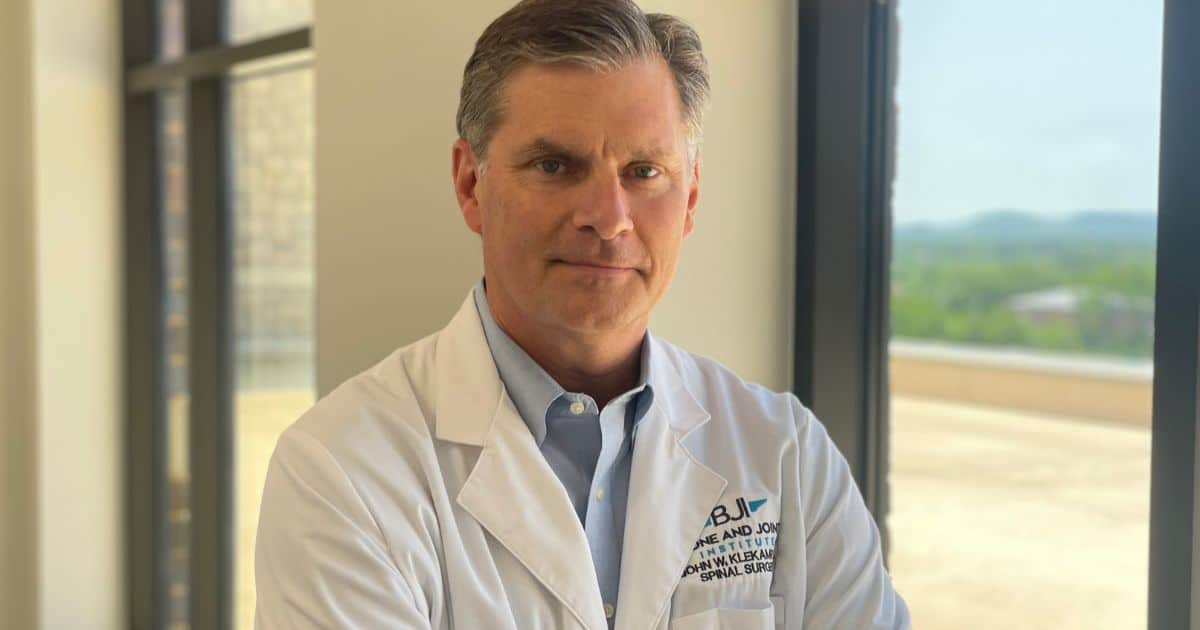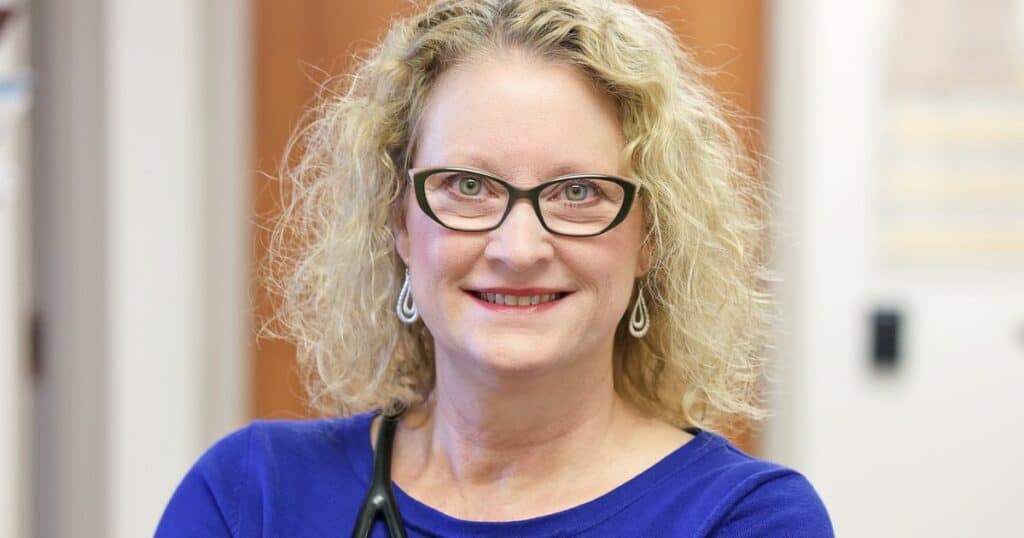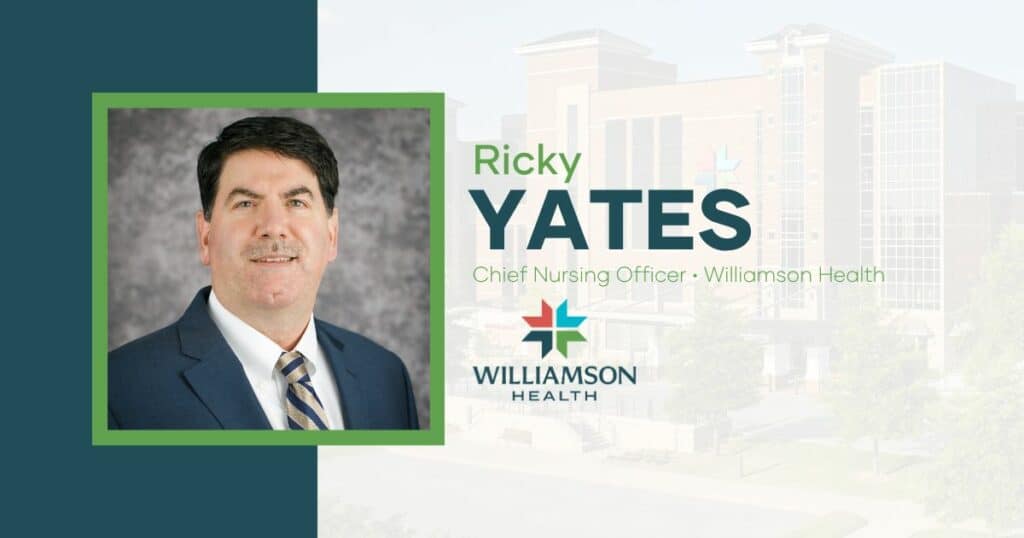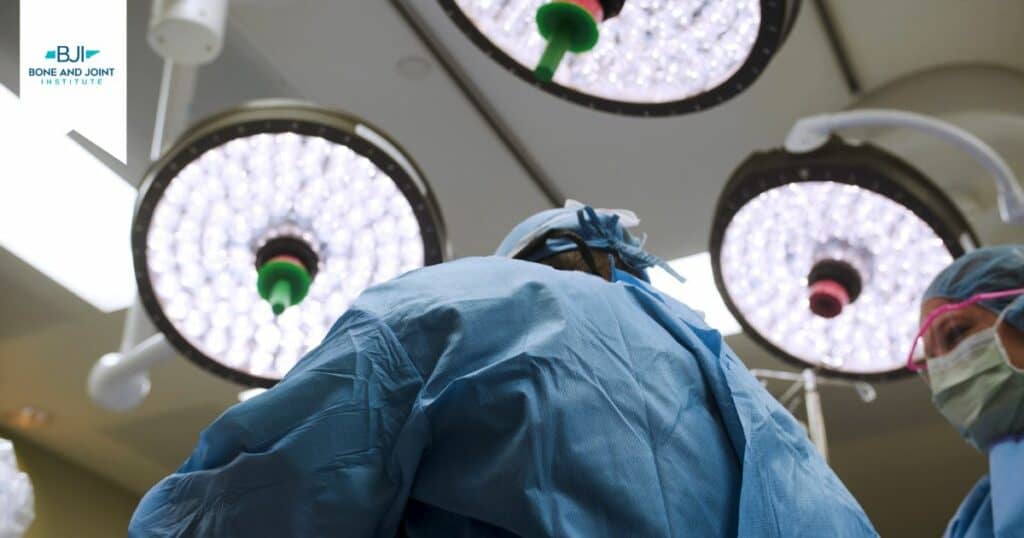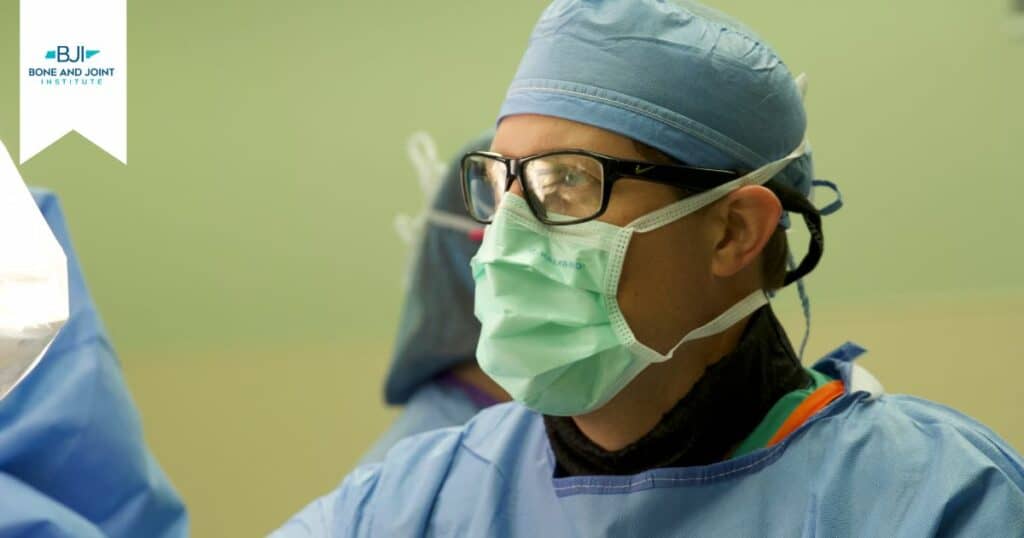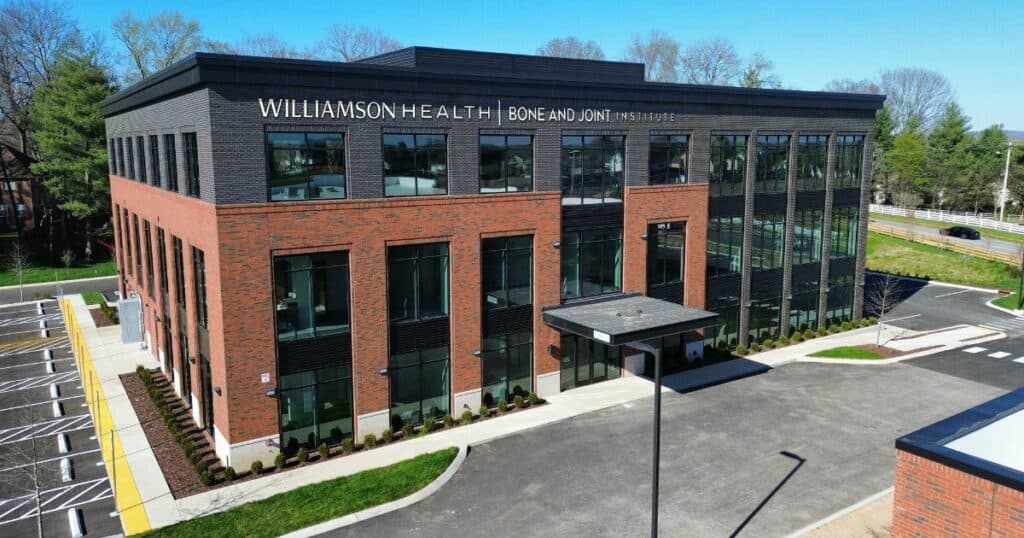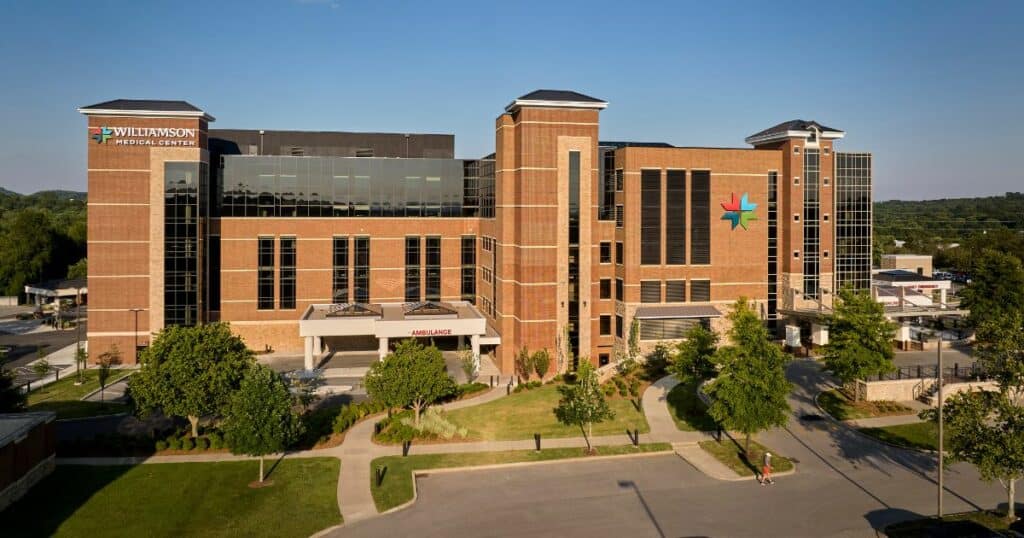The Latest in Spinal Fusion Surgery: Advancements in Surgical Techniques and Protocols for Care
Published: November 25, 2023
Originally published in the Williamson Source —
Bone and Joint Institute of Tennessee, a part of the Williamson Health system, emphasizes a team approach to healing. Orthopaedic Surgeon, John Klekamp, M.D., shares how the outcomes of spinal fusion surgery are optimized with enhanced communication and by prioritizing teamwork. The combination of advancements in surgical techniques and protocols for care makes for faster healing and better results for the patient experience.
What is Spinal Fusion?
Dr. Klekamp explains, “I think patients hear spinal fusion and become concerned about what that involves. The idea behind fusion is to treat potential instability in the spine. Fusion is the stabilization of the vertebral column with the use of bone and internal fixation, usually screws, rods, or some sort of implant. The need for fusion is based on the potential or the existence of instability in the spine secondary to degenerative disc disease, wear and tear, tumor, or trauma.”
Instability in the spine can also be based on the need to decompress nerves. A common example in patients would be spinal stenosis, or pinched nerves in the back of the body. With x-ray and MRI imaging, surgeons sometimes determine that instability could be created through surgical decompression to relieve pressure on the nerves. That instability would then require fusion to support the spinal column. In most circumstances, it’s a beneficial procedure for the patient that allows them to avoid further surgery in the future.
What advancements in surgical techniques are most helpful for enhanced patient outcomes?
“There have been significant advancements in spinal fusion in general over the last few years,” says Dr. Klekamp. From the surgical approach to instrumentation, updated techniques are less invasive and offer improved outcomes for the patient.
- Enhanced Imaging – Enhanced imaging techniques have improved the surgical process. Dr. Klekamp explains, “Williamson Health has obtained better intra–operative imaging through Ziehm 3D Intra-Operative Imaging that gives surgeons 3D real-time images of the operation as it’s going on while the patient is under general anesthesia. It allows us to confirm decompression of the nerves, placement of instrumentation, and to make sure the surgery is optimized.”
- Surgical Approach – There have also been several advancements in the method of approach to spinal fusion surgery. “One approach is called the OLIF approach,” says Dr. Klekamp, “which stands for Oblique Lumbar Inter-Body Fusion. This is a minimally invasive approach that allows us to create a small incision on the patient’s flank to reach the front part of the spine to remove the disc and place a fusion cage in the disc space. It saves our patients an incision on their back, which is the traditional approach.”
- Instrumentation – Dr. Klekamp is interested in the potential of the 3D-printed Matrixx bone fusion cage. “We’re finding through our research that 3D-printed metal, such as titanium, fuses much better than bone fusion cages from plastic,” he says, “We can often specialize and tailor certain products to a patient’s body habits.” While the process is still in development, the future goal of 3D-printed instrumentation is to use preoperative imaging to create a bone fusion cage specifically created for a patient.
- Biologics – Biologics are “synthetically-made fusion materials developed over the last 20 years that supplant the need for surgically taking bone grafts from the patient,” explains Dr. Klekamp. Traditionally, a separate incision would be made to harvest bone from the patient’s pelvis during spinal surgery. With synthetic high-powered fusion material such as bone morphogenic protein or demineralized bone matrix, patients avoid an additional incision.
These advancements allow more exacting, minimally invasive surgical procedures with smaller incisions and less muscle dissection. The result means less pain post-operatively for the patient and a better path to recovery.
How does approaching healing as a team optimize the patient’s result?
Bone and Joint Institute of Tennessee emphasizes a team approach, which is reflected in the entire patient journey with spinal surgery. Dr. Klekamp and his team perform surgeries at Williamson Health, where the Orthopaedic Total Joint and Spine Floor is specifically designed for post-operative recovery for spine patients. Bone and Joint Institute has a collective group dedicated to this purpose, including an excellent team of nurses and physical therapists.
Bone and Joint Institute has also developed detailed protocols for pre- and post-operative care that optimize a patient’s result with spinal fusion surgery.
- Patient Preparation – Communication is an essential part of patient preparation. Since fusion is a more complex surgery than other spinal surgeries like discectomy or outpatient surgeries, Dr. Klekamp highlights the need for communication: “It’s best that a patient understands the team effort, including themselves, as part of the recovery process. If we have the patient buying into this process and have them serve an active role, they can then understand how to prepare themselves for surgery.”
- Collaboration – Enhanced communication creates collaboration between the patient and all the healthcare providers involved in their healing journey. As part of their active role in the pre-therapy process, patients are encouraged to work with their physicians to optimize their pre-operative medical conditions, such as diabetes, before going into surgery.
- “We also want to emphasize bone health since part of the fusion process is creating a healthy bone environment,” so Dr. Klekamp will discuss adding calcium or vitamin D supplements in conjunction with the advice of primary care physicians.
- Patient preparation is the highest priority at Bone and Joint Institute, so patients and their family members can also attend in-house Spinal Fusion Classes. This educational program helps them understand what is involved in spinal surgery and how they can work as a team through recovery.
- Enhanced Recovery After Surgery (ERAS) Protocols – In the hospital, ERAS protocols have been established to help mitigate the reliance on narcotic pain medicine. Dr. Klekamp explains, “Narcotic use after surgery is not always best for the patient, so we’ve developed multi-modal pain management to minimize the amount of narcotics. Oftentimes, these narcotic medicines can create more problems, such as constipation, drowsiness, or apathy.” The use of muscle relaxants, IV lidocaine drip, and mobilization and physical therapy techniques as an alternative to post-operative narcotics aids in a shorter recovery process. Using the ERAS system after surgery helps with the mobilization of the patient and with pain control, even after discharge.
- In addition, “ERAS connects patients to the medical team for an enhanced feeling of comfort for the patient after complex spinal surgery.” Patients can reach out any time through the Bone and Joint Patient Portal, a virtual messaging board where Dr. Klekamp’s nurse, Julie Williams, and Physician’s Assistant, John Tisdale, are available every day to answer any questions or concerns that a patient is experiencing post-op.
- Additionally, Williamson Medical Center is open 24/7 with a daily on-call Bone and Joint Institute physician in case any emergent issues arise. Bone and Joint Institute also has four Orthopaedic Urgent Care facilities to provide more options for patients to receive care.
All the modalities for patient preparation and recovery place an emphasis on teamwork at Bone and Joint Institute. Enhanced communication and alternative care techniques are just as important as advances in technology and surgical approaches. The patient experience is significantly improved by the use of teamwork-based strategies.
More About Dr. John Klekamp
John Klekamp, M.D., is a board-certified orthopaedic surgeon specializing in care of the spine who joined Bone and Joint Institute of Tennessee in 2004. Dr. Klekamp earned his medical degree from the Mercer University School of Medicine in Macon, Georgia, and completed his residency training in internal medicine and orthopaedic surgery training at Vanderbilt University Medical Center. Dr. Klekamp received his spine fellowship training at the Emory Spine Center in Atlanta, Georgia. His professional interests include various approaches and treatments of the cervical spine, including cervical anterior discectomy, cervical anterior disc arthroplasty, lumbar decompression, and minimally invasive cervical decompression. He has a certification from Zimmer/Biomet for surgery using the Mobi-C cervical disc arthroplasty system. Dr. Klekamp is a member of the American Academy of Orthopaedic Surgeons (AAOS) and the North American Spine Society. He is a father of three boys and enjoys hiking, camping, and spending time with his family.
To learn more about personalized surgical and non-surgical treatment for neck and back problems, contact Bone and Joint Institute of Tennessee. Call 615-791-2630 or schedule an appointment online.
The Latest in Spinal Fusion Surgery: Advancements in Surgical Techniques and Protocols for Care
Originally published in the Williamson Source —
Bone and Joint Institute of Tennessee, a part of the Williamson Health system, emphasizes a team approach to healing. Orthopaedic Surgeon, John Klekamp, M.D., shares how the outcomes of spinal fusion surgery are optimized with enhanced communication and by prioritizing teamwork. The combination of advancements in surgical techniques and protocols for care makes for faster healing and better results for the patient experience.
What is Spinal Fusion?
Dr. Klekamp explains, “I think patients hear spinal fusion and become concerned about what that involves. The idea behind fusion is to treat potential instability in the spine. Fusion is the stabilization of the vertebral column with the use of bone and internal fixation, usually screws, rods, or some sort of implant. The need for fusion is based on the potential or the existence of instability in the spine secondary to degenerative disc disease, wear and tear, tumor, or trauma.”
Instability in the spine can also be based on the need to decompress nerves. A common example in patients would be spinal stenosis, or pinched nerves in the back of the body. With x-ray and MRI imaging, surgeons sometimes determine that instability could be created through surgical decompression to relieve pressure on the nerves. That instability would then require fusion to support the spinal column. In most circumstances, it’s a beneficial procedure for the patient that allows them to avoid further surgery in the future.
What advancements in surgical techniques are most helpful for enhanced patient outcomes?
“There have been significant advancements in spinal fusion in general over the last few years,” says Dr. Klekamp. From the surgical approach to instrumentation, updated techniques are less invasive and offer improved outcomes for the patient.
- Enhanced Imaging – Enhanced imaging techniques have improved the surgical process. Dr. Klekamp explains, “Williamson Health has obtained better intra–operative imaging through Ziehm 3D Intra-Operative Imaging that gives surgeons 3D real-time images of the operation as it’s going on while the patient is under general anesthesia. It allows us to confirm decompression of the nerves, placement of instrumentation, and to make sure the surgery is optimized.”
- Surgical Approach – There have also been several advancements in the method of approach to spinal fusion surgery. “One approach is called the OLIF approach,” says Dr. Klekamp, “which stands for Oblique Lumbar Inter-Body Fusion. This is a minimally invasive approach that allows us to create a small incision on the patient’s flank to reach the front part of the spine to remove the disc and place a fusion cage in the disc space. It saves our patients an incision on their back, which is the traditional approach.”
- Instrumentation – Dr. Klekamp is interested in the potential of the 3D-printed Matrixx bone fusion cage. “We’re finding through our research that 3D-printed metal, such as titanium, fuses much better than bone fusion cages from plastic,” he says, “We can often specialize and tailor certain products to a patient’s body habits.” While the process is still in development, the future goal of 3D-printed instrumentation is to use preoperative imaging to create a bone fusion cage specifically created for a patient.
- Biologics – Biologics are “synthetically-made fusion materials developed over the last 20 years that supplant the need for surgically taking bone grafts from the patient,” explains Dr. Klekamp. Traditionally, a separate incision would be made to harvest bone from the patient’s pelvis during spinal surgery. With synthetic high-powered fusion material such as bone morphogenic protein or demineralized bone matrix, patients avoid an additional incision.
These advancements allow more exacting, minimally invasive surgical procedures with smaller incisions and less muscle dissection. The result means less pain post-operatively for the patient and a better path to recovery.
How does approaching healing as a team optimize the patient’s result?
Bone and Joint Institute of Tennessee emphasizes a team approach, which is reflected in the entire patient journey with spinal surgery. Dr. Klekamp and his team perform surgeries at Williamson Health, where the Orthopaedic Total Joint and Spine Floor is specifically designed for post-operative recovery for spine patients. Bone and Joint Institute has a collective group dedicated to this purpose, including an excellent team of nurses and physical therapists.
Bone and Joint Institute has also developed detailed protocols for pre- and post-operative care that optimize a patient’s result with spinal fusion surgery.
- Patient Preparation – Communication is an essential part of patient preparation. Since fusion is a more complex surgery than other spinal surgeries like discectomy or outpatient surgeries, Dr. Klekamp highlights the need for communication: “It’s best that a patient understands the team effort, including themselves, as part of the recovery process. If we have the patient buying into this process and have them serve an active role, they can then understand how to prepare themselves for surgery.”
- Collaboration – Enhanced communication creates collaboration between the patient and all the healthcare providers involved in their healing journey. As part of their active role in the pre-therapy process, patients are encouraged to work with their physicians to optimize their pre-operative medical conditions, such as diabetes, before going into surgery.
- “We also want to emphasize bone health since part of the fusion process is creating a healthy bone environment,” so Dr. Klekamp will discuss adding calcium or vitamin D supplements in conjunction with the advice of primary care physicians.
- Patient preparation is the highest priority at Bone and Joint Institute, so patients and their family members can also attend in-house Spinal Fusion Classes. This educational program helps them understand what is involved in spinal surgery and how they can work as a team through recovery.
- Enhanced Recovery After Surgery (ERAS) Protocols – In the hospital, ERAS protocols have been established to help mitigate the reliance on narcotic pain medicine. Dr. Klekamp explains, “Narcotic use after surgery is not always best for the patient, so we’ve developed multi-modal pain management to minimize the amount of narcotics. Oftentimes, these narcotic medicines can create more problems, such as constipation, drowsiness, or apathy.” The use of muscle relaxants, IV lidocaine drip, and mobilization and physical therapy techniques as an alternative to post-operative narcotics aids in a shorter recovery process. Using the ERAS system after surgery helps with the mobilization of the patient and with pain control, even after discharge.
- In addition, “ERAS connects patients to the medical team for an enhanced feeling of comfort for the patient after complex spinal surgery.” Patients can reach out any time through the Bone and Joint Patient Portal, a virtual messaging board where Dr. Klekamp’s nurse, Julie Williams, and Physician’s Assistant, John Tisdale, are available every day to answer any questions or concerns that a patient is experiencing post-op.
- Additionally, Williamson Medical Center is open 24/7 with a daily on-call Bone and Joint Institute physician in case any emergent issues arise. Bone and Joint Institute also has four Orthopaedic Urgent Care facilities to provide more options for patients to receive care.
All the modalities for patient preparation and recovery place an emphasis on teamwork at Bone and Joint Institute. Enhanced communication and alternative care techniques are just as important as advances in technology and surgical approaches. The patient experience is significantly improved by the use of teamwork-based strategies.
More About Dr. John Klekamp
John Klekamp, M.D., is a board-certified orthopaedic surgeon specializing in care of the spine who joined Bone and Joint Institute of Tennessee in 2004. Dr. Klekamp earned his medical degree from the Mercer University School of Medicine in Macon, Georgia, and completed his residency training in internal medicine and orthopaedic surgery training at Vanderbilt University Medical Center. Dr. Klekamp received his spine fellowship training at the Emory Spine Center in Atlanta, Georgia. His professional interests include various approaches and treatments of the cervical spine, including cervical anterior discectomy, cervical anterior disc arthroplasty, lumbar decompression, and minimally invasive cervical decompression. He has a certification from Zimmer/Biomet for surgery using the Mobi-C cervical disc arthroplasty system. Dr. Klekamp is a member of the American Academy of Orthopaedic Surgeons (AAOS) and the North American Spine Society. He is a father of three boys and enjoys hiking, camping, and spending time with his family.
To learn more about personalized surgical and non-surgical treatment for neck and back problems, contact Bone and Joint Institute of Tennessee. Call 615-791-2630 or schedule an appointment online.
Published: November 25, 2023
